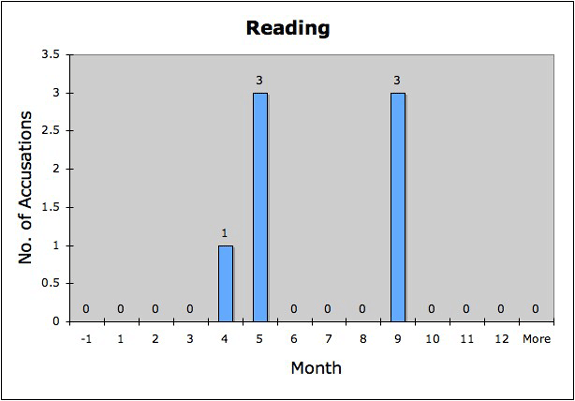Reading Accusations

Reading was located southwest of Salem Village. Using the "Reading" column as "Input Range" and the "Bin" data for the "Bin Range," a histogram shows that, unlike other communities studied, Reading's cases were almost evenly distributed in both waves, mirroring the overall pattern of Salem accusations. Four residents were charged in April and May and three in September 1692, making Reading residents vulnerable for the greater part of the entire Salem event.
Yet the histogram also shows that Reading's accusations came in two brief bursts; they were not spread over the entire period. (Users can identify the names of the accused by filtering the "Residence" column in the Accused Witches Data Set and then search the Salem Witchcraft Trial's online legal records to find their dates of arrest or examination. Other historical sources can also be researched for clues to explain Reading's unusual experience.)
Although the number, timing, and chronological span of accusations varied from community to community, communities with significant involvement in Salem Witchcraft generally participated primarily in either the first or second wave of accusations, not both. Generally, too, accusations erupted for a brief period of time, followed by a conclusive drop-off. It is worth considering whether this rhythmic pattern helped to prolong the witch hunt by continuously shifting its venue to new areas as those previously affected abandoned their pursuit.
Users are encouraged to examine the remaining three communities of intense involvement (Gloucester, Lynn, and Rowley) as well as communities with fewer than five accusations.
What about the geographical location of the communities involved in Salem Witchcraft? Click Next.